
C7200 VSA (VPN Services Adapter)
Installation and Configuration Guide
Corporate Headquarters
Cisco Systems, Inc. 170 West Tasman Drive
San Jose, CA
USA http://www.cisco.com Tel: 408
800
Text Part Number:

C7200 VSA (VPN Services Adapter)
Installation and Configuration Guide
Corporate Headquarters
Cisco Systems, Inc. 170 West Tasman Drive
San Jose, CA
USA http://www.cisco.com Tel: 408
800
Text Part Number:
THE SPECIFICATIONS AND INFORMATION REGARDING THE PRODUCTS IN THIS MANUAL ARE SUBJECT TO CHANGE WITHOUT NOTICE. ALL
STATEMENTS, INFORMATION, AND RECOMMENDATIONS IN THIS MANUAL ARE BELIEVED TO BE ACCURATE BUT ARE PRESENTED WITHOUT
WARRANTY OF ANY KIND, EXPRESS OR IMPLIED. USERS MUST TAKE FULL RESPONSIBILITY FOR THEIR APPLICATION OF ANY PRODUCTS.
THE SOFTWARE LICENSE AND LIMITED WARRANTY FOR THE ACCOMPANYING PRODUCT ARE SET FORTH IN THE INFORMATION PACKET THAT
SHIPPED WITH THE PRODUCT AND ARE INCORPORATED HEREIN BY THIS REFERENCE. IF YOU ARE UNABLE TO LOCATE THE SOFTWARE LICENSE
OR LIMITED WARRANTY, CONTACT YOUR CISCO REPRESENTATIVE FOR A COPY.
The following information is for FCC compliance of Class A devices: This equipment has been tested and found to comply with the limits for a Class A digital device, pursuant to part 15 of the FCC rules. These limits are designed to provide reasonable protection against harmful interference when the equipment is operated in a commercial environment. This equipment generates, uses, and can radiate
The following information is for FCC compliance of Class B devices: The equipment described in this manual generates and may radiate
Modifying the equipment without Cisco???s written authorization may result in the equipment no longer complying with FCC requirements for Class A or Class B digital devices. In that event, your right to use the equipment may be limited by FCC regulations, and you may be required to correct any interference to radio or television communications at your own expense.
You can determine whether your equipment is causing interference by turning it off. If the interference stops, it was probably caused by the Cisco equipment or one of its peripheral devices. If the equipment causes interference to radio or television reception, try to correct the interference by using one or more of the following measures:
???Turn the television or radio antenna until the interference stops.
???Move the equipment to one side or the other of the television or radio.
???Move the equipment farther away from the television or radio.
???Plug the equipment into an outlet that is on a different circuit from the television or radio. (That is, make certain the equipment and the television or radio are on circuits controlled by different circuit breakers or fuses.)
Modifications to this product not authorized by Cisco Systems, Inc. could void the FCC approval and negate your authority to operate the product.
The Cisco implementation of TCP header compression is an adaptation of a program developed by the University of California, Berkeley (UCB) as part of UCB???s public domain version of the UNIX operating system. All rights reserved. Copyright ?? 1981, Regents of the University of California.
NOTWITHSTANDING ANY OTHER WARRANTY HEREIN, ALL DOCUMENT FILES AND SOFTWARE OF THESE SUPPLIERS ARE PROVIDED ???AS IS??? WITH
ALL FAULTS. CISCO AND THE
LIMITATION, THOSE OF MERCHANTABILITY, FITNESS FOR A PARTICULAR PURPOSE AND NONINFRINGEMENT OR ARISING FROM A COURSE OF
DEALING, USAGE, OR TRADE PRACTICE.
IN NO EVENT SHALL CISCO OR ITS SUPPLIERS BE LIABLE FOR ANY INDIRECT, SPECIAL, CONSEQUENTIAL, OR INCIDENTAL DAMAGES, INCLUDING,
WITHOUT LIMITATION, LOST PROFITS OR LOSS OR DAMAGE TO DATA ARISING OUT OF THE USE OR INABILITY TO USE THIS MANUAL, EVEN IF CISCO
OR ITS SUPPLIERS HAVE BEEN ADVISED OF THE POSSIBILITY OF SUCH DAMAGES.
CCVP, the Cisco Logo, and the Cisco Square Bridge logo are trademarks of Cisco Systems, Inc.; Changing the Way We Work, Live, Play, and Learn is a service mark of Cisco Systems, Inc.; and Access Registrar, Aironet, BPX, Catalyst, CCDA, CCDP, CCIE, CCIP, CCNA, CCNP, CCSP, Cisco, the Cisco Certified Internetwork Expert logo, Cisco IOS, Cisco Press, Cisco Systems, Cisco Systems Capital, the Cisco Systems logo, Cisco Unity, Enterprise/Solver, EtherChannel, EtherFast, EtherSwitch, Fast Step, Follow Me Browsing, FormShare, GigaDrive, GigaStack, HomeLink, Internet Quotient, IOS, IP/TV, iQ Expertise, the iQ logo, iQ Net Readiness Scorecard, iQuick Study, LightStream, Linksys, MeetingPlace, MGX, Networking Academy, Network Registrar, Packet, PIX, ProConnect, RateMUX, ScriptShare, SlideCast, SMARTnet, StackWise, The Fastest Way to Increase Your Internet Quotient, and TransPath are registered trademarks of Cisco Systems, Inc. and/or its affiliates in the United States and certain other countries.
All other trademarks mentioned in this document or Website are the property of their respective owners. The use of the word partner does not imply a partnership relationship between Cisco and any other company. (0609R)
Any Internet Protocol (IP) addresses used in this document are not intended to be actual addresses. Any examples, command display output, and figures included in the document are shown for illustrative purposes only. Any use of actual IP addresses in illustrative content is unintentional and coincidental.
C7200 VSA (VPN Services Adapter) Installation and Configuration Guide
?? 2006 Cisco Systems, Inc. All rights reserved.

C O N T E N T S
C7200 VSA (VPN Services Adapter) Installation and Configuration Guide

Contents

Contents
C7200 VSA (VPN Services Adapter) Installation and Configuration Guide

Preface
This preface describes the objectives and organization of this document and explains how to find additional information on related products and services. This preface contains the following sections:
???Related Documentation, page ix
???Obtaining Documentation, page ix
???Documentation Feedback, page x
???Cisco Product Security Overview, page x
???Product Alerts and Field Notices, page xi
???Obtaining Technical Assistance, page xii
???Obtaining Additional Publications and Information, page xiii
Audience
The audience for this publication should be familiar with Cisco router hardware and cabling along with electronic circuitry and wiring practices. Experience as an electronic or electromechanical technician is recommended.
Warnings
Warning To prevent the system from overheating, do not operate it in an area that exceeds the maximum recommended ambient temperature of: 24??C (75??F).
Only trained and qualified personnel should be allowed to install, replace, or service this equipment.
C7200 VSA (VPN Services Adapter) Installation and Configuration Guide

Preface
Objectives
Warning IMPORTANT SAFETY INSTRUCTIONS
This warning symbol means danger. You are in a situation that could cause bodily injury. Before you work on any equipment, be aware of the hazards involved with electrical circuitry and be familiar with standard practices for preventing accidents. To see translations of the warnings that appear in this publication, refer to the translated safety warnings that accompanied this device.
Note: SAVE THESE INSTRUCTIONS
Note: This documentation is to be used in conjunction with the specific product installation guide that shipped with the product. Please refer to the Installation Guide, Configuration Guide, or other enclosed additional documentation for further details.
Objectives
This document contains instructions and procedures for installing and configuring the C7200 VSA (VPN Services Adapter), a
Cisco 7206VXR routers with the
The part number for the VSA is
Note To ensure compliance with U.S. export laws and regulations, and to prevent future problems, see the ???Compliance with U.S. Export Laws and Regulations Regarding Encryption??? section on page
Organization
This document contains the following chapters:
C7200 VSA (VPN Services Adapter) Installation and Configuration Guide

Preface
Related Documentation
Related Documentation
This section lists documentation related to your router and its functionality. Because we no longer ship the entire router documentation set automatically with each system, this documentation is available online, or on the Documentation
Note Select translated documentation is available at http://www.cisco.com/ by selecting the topic ???Select a Location / Language??? at the top of the page.
Some online documentation requires that you are a registered Cisco user. Complete the application at http://tools.cisco.com/RPF/register/register.do to become a registered Cisco user.
???For hardware installation and maintenance information for the Cisco 7200VXR series routers: http://www.cisco.com/en/US/products/hw/routers/ps341/tsd_products_support_series_home.html
???For port adapters and interface modules:
???Port adapter installation and configuration guides, available online at: http://www.cisco.com/en/US/products/hw/modules/ps2033/tsd_products_support_series_hom e.html
???Interfaces and services modules installation and configuration guides, available online at: http://www.cisco.com/en/US/products/hw/modules/tsd_products_support_category_home.htm l
???For Cisco IOS software configuration and support documentation, available online at: http://www.cisco.com/en/US/products/sw/iosswrel/tsd_products_support_category_home.html
???To find the right Cisco IOS software and the amount of memory you need to run the Cisco IOS features you want to run on your Cisco platform, use the Cisco IOS Software Selection Tool. Registered Cisco Direct users can access the Cisco IOS Software Selection Tool at: http://tools.cisco.com/ITDIT/ISTMAIN/servlet/index
???To find the minimum Cisco IOS software requirements for your router, use the Software Advisor tool. Registered Cisco Direct users can access the Software Advisor at:
???For security and VPN documentation, available online at: http://www.cisco.com/en/US/tech/tk583/tsd_technology_support_category_home.html
???If you are a registered Cisco Direct Customer, you can access Technical Assistance Center tools and support at: http://www.cisco.com/kobayashi/support/tac/tools.shtml
Obtaining Documentation
Cisco documentation and additional literature are available on Cisco.com. This section explains the product documentation resources that Cisco offers.
Cisco.com
You can access the most current Cisco documentation at this URL:
http://www.cisco.com/techsupport
C7200 VSA (VPN Services Adapter) Installation and Configuration Guide

Preface
Documentation Feedback
You can access the Cisco website at this URL:
You can access international Cisco websites at this URL:
http://www.cisco.com/public/countries_languages.shtml
Product Documentation DVD
The Product Documentation DVD is a library of technical product documentation on a portable medium. The DVD enables you to access installation, configuration, and command guides for Cisco hardware and software products. With the DVD, you have access to the HTML documentation and some of the
PDF files found on the Cisco website at this URL:
http://www.cisco.com/univercd/home/home.htm
The Product Documentation DVD is created and released regularly. DVDs are available singly or by subscription. Registered Cisco.com users can order a Product Documentation DVD (product number
http://www.cisco.com/go/marketplace/docstore
Ordering Documentation
You must be a registered Cisco.com user to access Cisco Marketplace. Registered users may order Cisco documentation at the Product Documentation Store at this URL:
http://www.cisco.com/go/marketplace/docstore
If you do not have a user ID or password, you can register at this URL:
http://tools.cisco.com/RPF/register/register.do
Documentation Feedback
You can provide feedback about Cisco technical documentation on the Cisco Technical Support & Documentation site area by entering your comments in the feedback form available in every online document.
Cisco Product Security Overview
Cisco provides a free online Security Vulnerability Policy portal at this URL:
http://www.cisco.com/en/US/products/products_security_vulnerability_policy.html
From this site, you will find information about how to do the following:
???Report security vulnerabilities in Cisco products
???Obtain assistance with security incidents that involve Cisco products
???Register to receive security information from Cisco
C7200 VSA (VPN Services Adapter) Installation and Configuration Guide
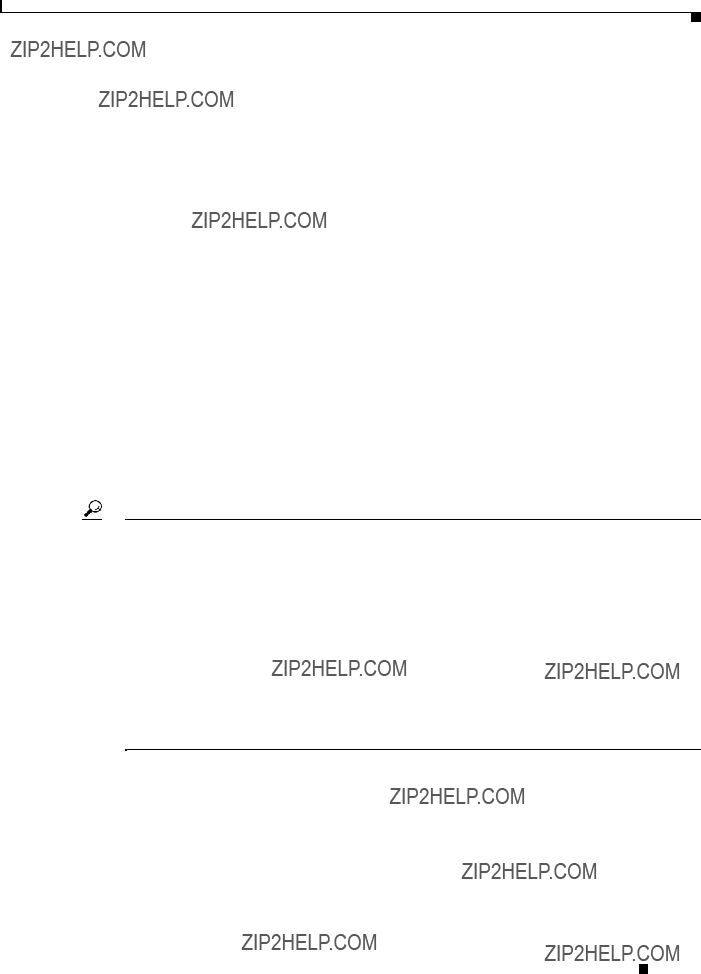
Preface
Product Alerts and Field Notices
A current list of security advisories, security notices, and security responses for Cisco products is available at this URL:
To see security advisories, security notices, and security responses as they are updated in real time, you can subscribe to the Product Security Incident Response Team Really Simple Syndication (PSIRT RSS) feed. Information about how to subscribe to the PSIRT RSS feed is found at this URL:
http://www.cisco.com/en/US/products/products_psirt_rss_feed.html
Reporting Security Problems in Cisco Products
Cisco is committed to delivering secure products. We test our products internally before we release them, and we strive to correct all vulnerabilities quickly. If you think that you have identified a vulnerability in a Cisco product, contact PSIRT:
???For emergencies only ???
An emergency is either a condition in which a system is under active attack or a condition for which a severe and urgent security vulnerability should be reported. All other conditions are considered nonemergencies.
???For nonemergencies ??? psirt@cisco.com
In an emergency, you can also reach PSIRT by telephone:
???1 877
???1 408
Tip We encourage you to use Pretty Good Privacy (PGP) or a compatible product (for example, GnuPG) to encrypt any sensitive information that you send to Cisco. PSIRT can work with information that has been encrypted with PGP versions 2.x through 9.x.
Never use a revoked encryption key or an expired encryption key. The correct public key to use in your correspondence with PSIRT is the one linked in the Contact Summary section of the Security Vulnerability Policy page at this URL:
http://www.cisco.com/en/US/products/products_security_vulnerability_policy.html
The link on this page has the current PGP key ID in use.
If you do not have or use PGP, contact PSIRT to find other means of encrypting the data before sending any sensitive material.
Product Alerts and Field Notices
Modifications to or updates about Cisco products are announced in Cisco Product Alerts and Cisco Field Notices. You can receive Cisco Product Alerts and Cisco Field Notices by using the Product Alert Tool on Cisco.com. This tool enables you to create a profile and choose those products for which you want to receive information.
C7200 VSA (VPN Services Adapter) Installation and Configuration Guide

Preface
Obtaining Technical Assistance
To access the Product Alert Tool, you must be a registered Cisco.com user. (To register as a Cisco.com user, go to this URL: http://tools.cisco.com/RPF/register/register.do) Registered users can access the tool at this URL: http://tools.cisco.com/Support/PAT/do/ViewMyProfiles.do?local=en
Obtaining Technical Assistance
Cisco Technical Support provides
Cisco Technical Support & Documentation website on Cisco.com features extensive online support resources. In addition, if you have a valid Cisco service contract, Cisco Technical Assistance Center (TAC) engineers provide telephone support. If you do not have a valid Cisco service contract, contact your reseller.
Cisco Technical Support & Documentation Website
The Cisco Technical Support & Documentation website provides online documents and tools for troubleshooting and resolving technical issues with Cisco products and technologies. The website is available 24 hours a day at this URL:
http://www.cisco.com/techsupport
Access to all tools on the Cisco Technical Support & Documentation website requires a Cisco.com user ID and password. If you have a valid service contract but do not have a user ID or password, you can register at this URL:
http://tools.cisco.com/RPF/register/register.do
Note Use the Cisco Product Identification Tool to locate your product serial number before submitting a request for service online or by phone. You can access this tool from the Cisco Technical Support & Documentation website by clicking the Tools & Resources link, clicking the All Tools
Tip Displaying and Searching on Cisco.com
If you suspect that the browser is not refreshing a web page, force the browser to update the web page by holding down the Ctrl key while pressing F5.
To find technical information, narrow your search to look in technical documentation, not the entire Cisco.com website. On the Cisco.com home page, click the Advanced Search link under the Search box and then click the Technical Support & Documentation radio button.
To provide feedback about the Cisco.com website or a particular technical document, click Contacts & Feedback at the top of any Cisco.com web page.
C7200 VSA (VPN Services Adapter) Installation and Configuration Guide

Preface
Obtaining Additional Publications and Information
Submitting a Service Request
Using the online TAC Service Request Tool is the fastest way to open S3 and S4 service requests. (S3 and S4 service requests are those in which your network is minimally impaired or for which you require product information.) After you describe your situation, the TAC Service Request Tool provides recommended solutions. If your issue is not resolved using the recommended resources, your service request is assigned to a Cisco engineer. The TAC Service Request Tool is located at this URL:
http://www.cisco.com/techsupport/servicerequest
For S1 or S2 service requests, or if you do not have Internet access, contact the Cisco TAC by telephone. (S1 or S2 service requests are those in which your production network is down or severely degraded.) Cisco engineers are assigned immediately to S1 and S2 service requests to help keep your business operations running smoothly.
To open a service request by telephone, use one of the following numbers:
Australia: 1 800 805 227
EMEA: +32 2 704 55 55
USA: 1 800 553 2447
For a complete list of Cisco TAC contacts, go to this URL:
http://www.cisco.com/techsupport/contacts
Definitions of Service Request Severity
To ensure that all service requests are reported in a standard format, Cisco has established severity definitions.
Severity 1
Severity 2
Severity 3
Severity 4
Obtaining Additional Publications and Information
Information about Cisco products, technologies, and network solutions is available from various online and printed sources.
???The Cisco Online Subscription Center is the website where you can sign up for a variety of Cisco
http://www.cisco.com/offer/subscribe
C7200 VSA (VPN Services Adapter) Installation and Configuration Guide

Preface
Obtaining Additional Publications and Information
???The Cisco Product Quick Reference Guide is a handy, compact reference tool that includes brief product overviews, key features, sample part numbers, and abbreviated technical specifications for many Cisco products that are sold through channel partners. It is updated twice a year and includes the latest Cisco channel product offerings. To order and find out more about the Cisco Product Quick Reference Guide, go to this URL:
???Cisco Marketplace provides a variety of Cisco books, reference guides, documentation, and logo merchandise. Visit Cisco Marketplace, the company store, at this URL:
http://www.cisco.com/go/marketplace/
???Cisco Press publishes a wide range of general networking, training, and certification titles. Both new and experienced users will benefit from these publications. For current Cisco Press titles and other information, go to Cisco Press at this URL:
???Internet Protocol Journal is a quarterly journal published by Cisco Systems for engineering professionals involved in designing, developing, and operating public and private internets and intranets. You can access the Internet Protocol Journal at this URL:
???Networking products offered by Cisco Systems, as well as customer support services, can be obtained at this URL:
http://www.cisco.com/en/US/products/index.html
???Networking Professionals Connection is an interactive website where networking professionals share questions, suggestions, and information about networking products and technologies with Cisco experts and other networking professionals. Join a discussion at this URL:
http://www.cisco.com/discuss/networking
??????What???s New in Cisco Documentation??? is an online publication that provides information about the latest documentation releases for Cisco products. Updated monthly, this online publication is organized by product category to direct you quickly to the documentation for your products. You can view the latest release of ???What???s New in Cisco Documentation??? at this URL:
http://www.cisco.com/univercd/cc/td/doc/abtunicd/136957.htm
???
http://www.cisco.com/en/US/learning/index.html
C7200 VSA (VPN Services Adapter) Installation and Configuration Guide

C H A P T E R 1
Overview
This chapter describes the C7200 VSA (VPN Services Adapter) and contains the following sections:
???Data Encryption Overview, page
???Hardware Required, page
???Supported Standards, MIBs, and RFCs, page
???Enabling/Disabling the VSA, page
???LEDs, page
Data Encryption Overview
This section describes data encryption, including the IPSec, IKE, and certification authority (CA) interoperability features.
Note For additional information on these features, refer to the ???IP Security and Encryption??? chapter in the
Security Configuration Guide and Security Command Reference publications.
IPSec is a network level open standards framework, developed by the Internet Engineering Task Force (IETF) that provides secure transmission of sensitive information over unprotected networks such as the Internet. IPSec includes data authentication, antireplay services and data confidentiality services.
Cisco follows these data encryption standards:
???
C7200 VSA (VPN Services Adapter) Installation and Configuration Guide

Chapter 1 Overview
VSA Overview
???
???
The component technologies implemented for IPSec include:
???DES and Triple
???
???MD5 (HMAC
???SHA (HMAC
???RSA signatures and RSA encrypted
IPSec with the Cisco IOS software supports the following additional standards:
???
The AH protocol uses various authentication algorithms; Cisco IOS software has implemented the mandatory MD5 and SHA (HMAC variants) authentication algorithms. The AH protocol provides antireplay services.
???
VSA Overview
The C7200 VSA (VPN Services Adapter) is a
C7200 VSA (VPN Services Adapter) Installation and Configuration Guide

Chapter 1 Overview
VSA Overview
Note The C7200 VSA is only supported on the Cisco 7200VXR with the
The VSA features hardware acceleration for Advanced Encryption Standard (AES), Data Encryption Standard (DES), and Triple DES (3DES), providing increased performance for
Figure

 148487
148487

 148488
148488
C7200 VSA (VPN Services Adapter) Installation and Configuration Guide

Chapter 1 Overview
Hardware Required
The VSA provides
???
???Data Encryption Standard (DES) standard mode with
???Performance to 900 Mbps encrypted throughput with 300 byte packets and 1000 tunnels
???5000 tunnels for DES/3DES/AES
???Secure Hash Algorithm1
???Rivest, Shamir, Adelman (RSA)
???
Hardware Required
The hardware required to ensure proper operation of the C7200 VSA is as follows:
???The C7200 VSA is compatible with the Cisco
???ROMmon
???I/O FPGA
???VSA FPGA
Features
This section describes the VSA features, as listed in Table
Table
1. As measured with IPSec 3DES
C7200 VSA (VPN Services Adapter) Installation and Configuration Guide

Chapter 1 Overview
Supported Standards, MIBs, and RFCs
2.Number of tunnels supported varies based on the total system memory installed.
3.On the
Performance
Table
Table
1.As measured with IPSec 3DES or AES Hashed Message Authentication Code
2.Using Cisco 12.4(4)XD3 fc2 image. Performance varies by Cisco IOS software release.
Supported Standards, MIBs, and RFCs
This section describes the standards, Management Information Bases (MIBs), and Request for Comments (RFCs) supported on the VSA. Requests for Comments (RFCs) contain information about the supported Internet suite of protocols.
Standards
??? IPSec/IKE: RFCs
MIBs
???
???
???
To obtain lists of supported MIBs by platform and Cisco IOS release, and to download MIB modules, go to the Cisco MIB website on Cisco.com at the following URL:
RFCs
??? IPSec/IKE: RFCs
C7200 VSA (VPN Services Adapter) Installation and Configuration Guide

Chapter 1 Overview
Enabling/Disabling the VSA
Enabling/Disabling the VSA
This section includes the following topics:
???Disabling the VSA during Operation, page
???Enabling/Disabling Scheme, page
The VSA crypto card does not support OIR. The VSA boots up only during system initialization. The VSA will not work if it is inserted after the system is up and running. The VSA can be shut down by a disabling CLI command. The VSA is ready for removal after the disabling CLI command is executed.
Disabling the VSA during Operation
Before removing the VSA, we recommend that you shut down the interface so that there is no traffic running through the VSA when it is removed. Removing an VSA while traffic is flowing through the ports can cause system disruption.
Caution You could damage the VSA, if you remove the VSA without entering the CLI command.
To disable the C7200 VSA, use the following commands, starting in global configuration mode:
Enabling/Disabling Scheme
This section describes how the VSA operates without OIR support.
Table
Table
Table
Table
C7200 VSA (VPN Services Adapter) Installation and Configuration Guide

Chapter 1 Overview
LEDs
Table
Table
LEDs
The VSA has one LED, as shown in Figure
C7200 VSA (VPN Services Adapter) Installation and Configuration Guide

Chapter 1 Overview
Connectors
The following conditions must be met before the enabled LED goes on:
???The VSA is correctly connected to the backplane and receiving power.
???The system bus recognizes the VSA.
If either of these conditions is not met, or if the router initialization fails for other reasons, the enabled LED does not go on.
Connectors
See Figure
Slot Locations
This section includes the following topics:
???Cisco 7204VXR Router, page
???Cisco 7206VXR Router, page
See Figure
See Figure
Cisco 7204VXR Router
The VSA is supported in the I/O controller port on the Cisco 7204VXR router (see 3 in Figure
C7200 VSA (VPN Services Adapter) Installation and Configuration Guide

Chapter 1 Overview
Slot Locations
Figure
3
EN 1
3
153565
2 Port adapter lever
C7200 VSA (VPN Services Adapter) Installation and Configuration Guide

Chapter 1 Overview
Slot Locations
Cisco 7206VXR Router
The VSA is supported in the I/O controller port on the Cisco 7206VXR router (see 4 in Figure
Figure
3
2 Port adapter
153566
C7200 VSA (VPN Services Adapter) Installation and Configuration Guide

C H A P T E R 2
Preparing for Installation
This chapter describes the general equipment, safety, and site preparation requirements for installing the C7200 VSA (VPN Services Adapter). This chapter contains the following sections:
???Required Tools and Equipment, page
???Hardware and Software Requirements, page
???Online Insertion and Removal (OIR), page
???Safety Guidelines, page
???Compliance with U.S. Export Laws and Regulations Regarding Encryption, page
Required Tools and Equipment
You need the following tools and parts to install a VSA. If you need additional equipment, contact a service representative for ordering information.
???VSA
???Number 2 Phillips screwdriver
???Your own electrostatic discharge
???Antistatic mat
???Antistatic container
Hardware and Software Requirements
This section describes the minimum software and hardware requirements for the VSA:
???Software Requirements, page
???Hardware Requirements, page
C7200 VSA (VPN Services Adapter) Installation and Configuration Guide

Chapter 2 Preparing for Installation
Hardware and Software Requirements
Software Requirements
Table
Table
To check the minimum software requirements of Cisco IOS software with the hardware installed on your router, Cisco maintains the Software Advisor tool on Cisco.com. Registered Cisco Direct users can access the Software Advisor at:
Note Access to this tool is limited to users with Cisco.com login accounts.
Hardware Requirements
The hardware required to ensure proper operation of the VSA is as follows:
???The VSA is compatible with the Cisco
The Cisco
???ROMmon
???I/O FPGA
???VSA FPGA
Restrictions
The VSA has the following restrictions:
???VSA does not interoperate with other ISA or VAM/VAM2/VAM2+ crypto cards in the same router. The VAM/VAM2/VAM2+ crypto cards are disabled when the VSA is active in the Cisco 7200VXR series routers with the
???Only a single VSA card is supported on the Cisco 7200VXR series routers with the
Note Only Cisco 7200VXR series routers with the
C7200 VSA (VPN Services Adapter) Installation and Configuration Guide

Chapter 2 Preparing for Installation
Online Insertion and Removal (OIR)
???The VSA module does not support Online Insertion and Removal (OIR). See ???Enabling/Disabling the VSA??? section on page
???Per packet count details for crypto map ACL are not displayed when the show
Use other counters, such as the output from the show crypto ipsec sa and show crypto engine accelerator statistics 0 commands, to determine if the VSA is processing the packets.
???An
Online Insertion and Removal (OIR)
The VSA plugs into the I/O controller slot of the Cisco 7200VXR series chassis. The VSA crypto card does not support OIR. The VSA boots up only during system initialization. The VSA will not work if it is inserted after the system is up and running. The VSA can be shut down by a disabling CLI command (see ???Enabling/Disabling the VSA??? section on page
Caution You could damage the VSA, if you remove the VSA without entering the CLI command.
Before removing the VSA, we recommend that you shut down the interface so that there is no traffic running through the VSA when it is removed. Removing an VSA while traffic is flowing through the ports can cause system disruption.
For more information on OIR, go to ???Enabling/Disabling the VSA??? section on page
Safety Guidelines
This section provides safety guidelines that you should follow when working with any equipment that connects to electrical power or telephone wiring. This section includes the following topics:
???Electrical Equipment Guidelines, page
???Preventing Electrostatic Discharge Damage, page
Safety Warnings
Safety warnings appear throughout this publication in procedures that, if performed incorrectly, might harm you. A warning symbol precedes each warning statement.
Warning Ultimate disposal of this product should be handled according to all national laws and regulations.
Hazardous voltage or energy is present on the backplane when the system is operating. Use caution when servicing.
Blank faceplates and cover panels serve three important functions: they prevent exposure to
C7200 VSA (VPN Services Adapter) Installation and Configuration Guide

Chapter 2 Preparing for Installation
Safety Guidelines
hazardous voltages and currents inside the chassis; they contain electromagnetic interference (EMI) that might disrupt other equipment; and they direct the flow of cooling air through the chassis. Do not operate the system unless all cards, faceplates, front covers, and rear covers are in place.
Electrical Equipment Guidelines
Follow these basic guidelines when working with any electrical equipment:
???Before beginning any procedures requiring access to the chassis interior, locate the emergency
???Disconnect all power and external cables before moving a chassis; do not work alone when potentially hazardous conditions exist.
???Never assume that power has been disconnected from a circuit; always check.
???Do not perform any action that creates a potential hazard to people or makes the equipment unsafe; carefully examine your work area for possible hazards such as moist floors, ungrounded power extension cables, and missing safety grounds.
Preventing Electrostatic Discharge Damage
Electrostatic discharge (ESD) damage, which can occur when electronic cards or components are improperly handled, results in complete or intermittent failures. Port adapters and processor modules comprise printed circuit boards that are fixed in metal carriers. Electromagnetic interference (EMI) shielding and connectors are integral components of the carrier. Although the metal carrier helps to protect the board from ESD, use a preventive antistatic strap during handling.
Following are guidelines for preventing ESD damage:
???Always use an ESD wrist or ankle strap and ensure that it makes good skin contact.
???Connect the equipment end of the strap to an unfinished chassis surface.
???When installing a component, use any available ejector levers or captive installation screws to properly seat the bus connectors in the backplane or midplane. These devices prevent accidental removal, provide proper grounding for the system, and help to ensure that bus connectors are properly seated.
???When removing a component, use any available ejector levers or captive installation screws to release the bus connectors from the backplane or midplane.
???Handle carriers by available handles or edges only; avoid touching the printed circuit boards or connectors.
???Place a removed board
???Avoid contact between the printed circuit boards and clothing. The wrist strap only protects components from ESD voltages on the body; ESD voltages on clothing can still cause damage.
???Never attempt to remove the printed circuit board from the metal carrier.
???For safety, periodically check the resistance value of the antistatic strap. The measurement should be between 1 and 10 Mohm.
C7200 VSA (VPN Services Adapter) Installation and Configuration Guide

Chapter 2 Preparing for Installation
Compliance with U.S. Export Laws and Regulations Regarding Encryption
Compliance with U.S. Export Laws and Regulations Regarding Encryption
This product performs encryption and is regulated for export by the U.S. government. Persons exporting any item out of the United States by either physical or electronic means must comply with the Export Administration Regulations as administered by the U.S. Department of Commerce, Bureau of Export Administration. See http://www.bxa.doc.gov/ for more information.
Certain ???strong??? encryption items can be exported outside the United States depending upon the destination, end user, and end use. See http://www.cisco.com/wwl/export/encrypt.html for more information about
Check local country laws prior to export to determine import and usage requirements as necessary. See http://cwis.kub.nl/~frw/people/koops/lawsurvy.htm as one possible, unofficial source of international encryption laws.
C7200 VSA (VPN Services Adapter) Installation and Configuration Guide

Chapter 2 Preparing for Installation
Compliance with U.S. Export Laws and Regulations Regarding Encryption
C7200 VSA (VPN Services Adapter) Installation and Configuration Guide

C H A P T E R 3
Removing and Installing the VSA
This chapter describes how to remove the C7200 VSA (VPN Services Adapter) from the supported platforms and how to install a new or replacement VSA.
Before you begin installation, read Chapter 2, ???Preparing for Installation??? for a list of parts and tools required for installation.
This chapter contains the following sections:
???Online Insertion and Removal (OIR), page
???Warnings and Cautions, page
???VSA Removal and Installation, page
Note A system without an I/O controller or VSA, should have an empty slot to maintain the air flow.
The VSA circuit board is sensitive to ESD damage.
Handling the VSA
The VSA is a
Caution Always handle the VSA by the carrier edges and handle; never touch the VSA components or connector pins. (See Figure
Figure
Printed circuit board

Chapter 3 Removing and Installing the VSA
Online Insertion and Removal (OIR)
Online Insertion and Removal (OIR)
The VSA plugs into the I/O controller slot of the Cisco 7200VXR series chassis. The VSA crypto card does not support OIR. The VSA boots up only during system initialization. The VSA will not work if it is inserted after the system is up and running. The VSA can be shut down by a disabling CLI command (see ???Enabling/Disabling the VSA??? section on page
Caution You could damage the VSA, if you remove the VSA without entering the CLI command.
For more information on OIR, go to ???Enabling/Disabling the VSA??? section on page
Warnings and Cautions
Observe the following warnings and cautions when installing or removing the VSA.
Warning Blank faceplates and cover panels serve three important functions: they prevent exposure to hazardous voltages and currents inside the chassis; they contain electromagnetic interference (EMI) that might disrupt other equipment; and they direct the flow of cooling air through the chassis. Do not operate the system unless all cards, faceplates, front covers, and rear covers are in place.
The safety cover is an integral part of the product. Do not operate the unit without the safety cover installed. Operating the unit without the cover in place will invalidate the safety approvals and pose a risk of fire and electrical hazards.
Warning Before working on equipment that is connected to power lines, remove jewelry (including rings, necklaces, and watches). Metal objects will heat up when connected to power and ground and can cause serious burns or weld the metal object to the terminals.
Keep hands and fingers out of the power supply bays. High voltage is present on the power backplane when the system is running.
VSA Removal and Installation
This section describes how to remove and install the VSA.
Warning When performing the following procedures, wear a grounding wrist strap to avoid ESD damage to the card. Some platforms have an ESD connector for attaching the wrist strap. Do not directly touch the midplane or backplane with your hand or any metal tool, or you could shock yourself.
Note After powering off the router, wait at least 30 seconds before powering it on again.
C7200 VSA (VPN Services Adapter) Installation and Configuration Guide

Chapter 3 Removing and Installing the VSA
VSA Removal and Installation
Follow these steps to remove and insert the VSA in the Cisco 7200VXR series routers:
Step 1 Turn the power switch to the off position and then remove the power cable. (Optional on Cisco 7200VXR series routers; see Warnings and Cautions, page
Step 2 Attach an ESD wrist strap between you and an unpainted chassis surface.
Step 3 Unscrew the screws holding the VSA in the slot.
Step 4 Grasp the handle of the VSA and pull the VSA from the router (see Figure
Figure
Step 5 Carefully align the new VSA carrier between the upper and the lower edges of the I/O controller slot.
Caution To prevent jamming the carrier between the upper and the lower edges of the I/O controller slot, and to ensure that the edge connector at the rear of the VSA mates with the connection at the rear of the I/O controller slot, make certain that the carrier is positioned correctly, as shown in Figure
Step 6 Slide the new VSA into the I/O controller slot until it is seated in the router midplane.
Caution Do not allow the VSA components to come in contact with the system board or the VSA could be damaged.
If you are removing, but not replacing a VSA, insert a blank service adapter filler in the unoccupied I/O controller slot, to ensure the proper flow of cooling air across the internal components.
Step 7 Reattach the power cable, and place the cable through any cable support brackets.
Step 8 Power on the router by turning the power switch to the on position.
This completes the removal and installation procedure of the VSA from the Cisco 7200VXR series routers.
C7200 VSA (VPN Services Adapter) Installation and Configuration Guide

Chapter 3 Removing and Installing the VSA
VSA Removal and Installation
C7200 VSA (VPN Services Adapter) Installation and Configuration Guide

C H A P T E R 4
Configuring the VSA
This chapter contains the information and procedures needed to configure the
???Configuration Tasks, page
???Configuration Examples, page
???Basic IPSec Configuration Illustration, page
???Troubleshooting Tips, page
???Monitoring and Maintaining the VSA, page
Overview
The VSA in the I/O controller slot provides encryption services for the I/O controller port in the Cisco 7204VXR or Cisco 7206VXR router with a
Note The Cisco 7204VXR and the 7206VXR routers support a single VSA.
There are no interfaces to configure on the VSA.
This section only contains basic configuration information for enabling encryption and IPSec tunneling services. Refer to the ???IP Security and Encryption??? part of the Security Configuration Guide and the Security Command Reference guide for detailed configuration information on IPSec, IKE, and CA.
Configuration Tasks
On power up, the VSA is fully functional and does not require any configuration commands. However, for the VSA to provide encryption services, you must complete the steps in the following sections:
???Using the EXEC Command Interpreter, page
???Configuring an IKE Policy, page
???Configuring a Transform Set, page
???Configuring IPSec, page
C7200 VSA (VPN Services Adapter) Installation and Configuration Guide
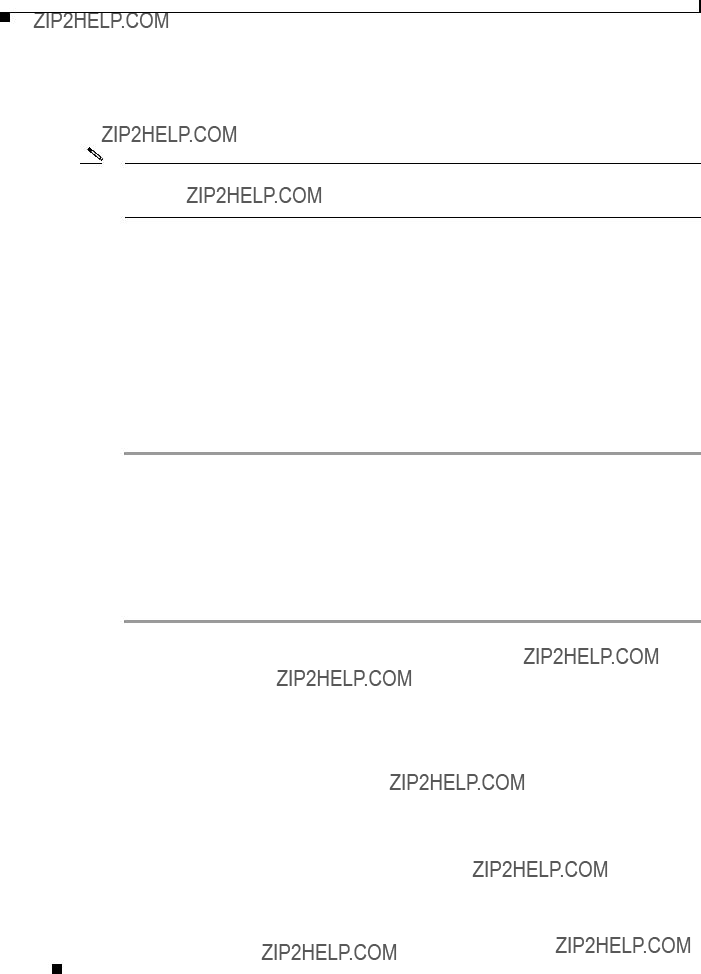
Chapter 4 Configuring the VSA
Configuration Tasks
???Disabling VSA (Optional), page
???Verifying IKE and IPSec Configurations, page
???Configuring IPSec Configuration Example, page
Note You can configure a static crypto map, create a dynamic crypto map, or add a dynamic crypto map into a static crypto map. Refer to the configuration examples and tech notes located online at: http://www.cisco.com/en/US/products/sw/secursw/ps2308/prod_configuration_examples_list.html.
Optionally, you can configure certification authority (CA) interoperability (refer to the ???Configuring Certification Authority Interoperability??? chapter in the Security Configuration Guide).
Using the EXEC Command Interpreter
You modify the configuration of your router through the software command interpreter called the EXEC (also called enable mode). You must enter the privileged level of the EXEC command interpreter with the enable command before you can use the configure command to configure a new interface or change the existing configuration of an interface. The system prompts you for a password if one has been set.
The system prompt for the privileged level ends with a pound sign (#) instead of an angle bracket (>). At the console terminal, use the following procedure to enter the privileged level:
Step 1 At the
Router> enable
Password:
Step 2 Enter the password (the password is case sensitive). For security purposes, the password is not displayed. When you enter the correct password, the system displays the
Router#
This completes the procedure for entering the privileged level of the EXEC command interpreter.
Configuring an IKE Policy
If you do not specify a value for a parameter, the default value is assigned. For information on default values, refer to the ???IP Security and Encryption??? chapter of the Security Command Reference publication.
C7200 VSA (VPN Services Adapter) Installation and Configuration Guide

Chapter 4 Configuring the VSA
Configuration Tasks
To configure an IKE policy, use the following commands beginning in global configuration mode:
C7200 VSA (VPN Services Adapter) Installation and Configuration Guide

Chapter 4 Configuring the VSA
Configuration Tasks
Step 5
Step 6
For detailed information on creating IKE policies, refer to the ???Configuring Internet Key Exchange Security Protocol??? chapter in the Security Configuration Guide publication.
Disabling VSA (Optional)
The VSA is enabled by default.
To disable the VSA, use the following commands, starting in global configuration mode:
This completes the procedure for disabling and preparing to enable VSA after the next system reboot.
Configuring a Transform Set
See the Advanced Encryption Standard (AES) feature module for more information on configuring a transform set.
This section includes the following topics:
???IPSec Protocols: AH and ESP
C7200 VSA (VPN Services Adapter) Installation and Configuration Guide

Chapter 4 Configuring the VSA
Configuration Tasks
???Selecting Appropriate Transforms
???The Crypto Transform Configuration Mode
???Changing Existing Transforms
A transform set is an acceptable combination of security protocols, algorithms, and other settings to apply to IPSec protected traffic. During the IPSec security association (SA) negotiation, the peers agree to use a particular transform set when protecting a particular data flow.
Defining a Transform Set
A transform set is a combination of security protocols and algorithms. During the IPSec security association negotiation, peers agree to use a specific transform set to protect a particular data flow.
To define a transform set, use the following commands, starting in global configuration mode:
Note The clear commands in Step 4 below are in EXEC or enable mode (see ???Using the EXEC Command Interpreter??? section on page
C7200 VSA (VPN Services Adapter) Installation and Configuration Guide

Chapter 4 Configuring the VSA
Configuration Tasks
Table
Table
Examples of acceptable transform combinations are as follows:
???
???
???
???
The parser will prevent you from entering invalid combinations; for example, once you specify an AH transform it will not allow you to specify another AH transform for the current transform set.
C7200 VSA (VPN Services Adapter) Installation and Configuration Guide
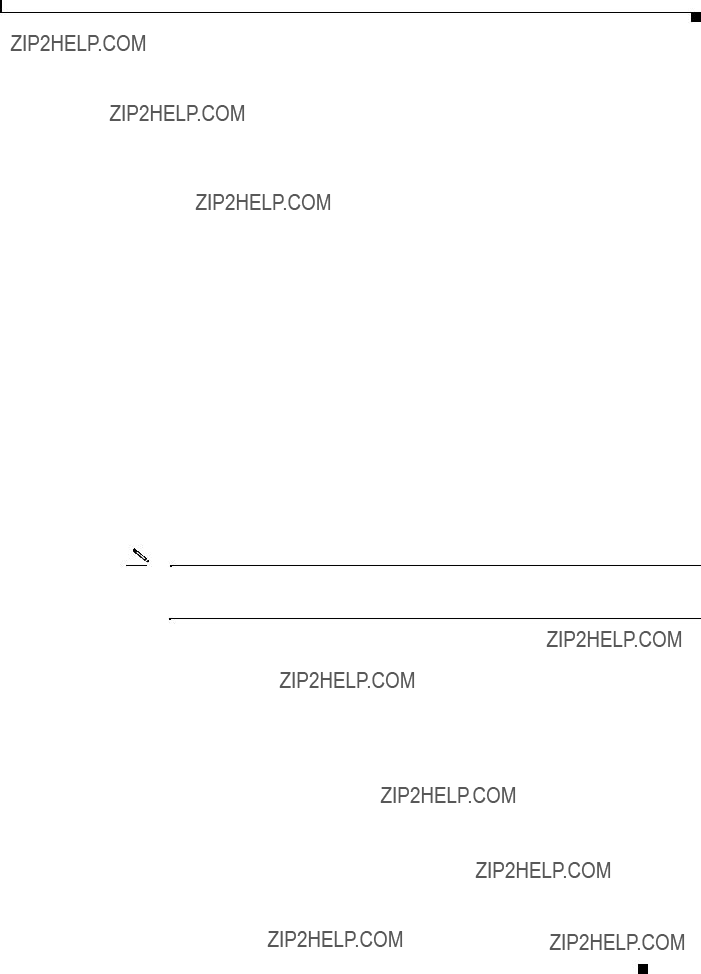
Chapter 4 Configuring the VSA
Configuration Tasks
IPSec Protocols: AH and ESP
Both the AH and ESP protocols implement security services for IPSec.
AH provides data authentication and antireplay services.
ESP provides packet encryption and optional data authentication and antireplay services.
ESP encapsulates the protected
Selecting Appropriate Transforms
The following tips may help you select transforms that are appropriate for your situation:
???If you want to provide data confidentiality, include an ESP encryption transform.
???If you want to ensure data authentication for the outer IP header as well as the data, include an AH transform. (Some consider the benefits of outer IP header data integrity to be debatable.)
???If you use an ESP encryption transform, also consider including an ESP authentication transform or an AH transform to provide authentication services for the transform set.
???If you want data authentication (either using ESP or AH) you can choose from the MD5 or SHA (HMAC keyed hash variants) authentication algorithms. The SHA algorithm is generally considered stronger than MD5 but is slightly slower.
???Note that some transforms might not be supported by the IPSec peer.
Note If a user enters an IPSec transform that the hardware (the IPSec peer) does not support, a warning message will be displayed immediately after the crypto ipsec
???In cases where you need to specify an encryption transform but do not actually encrypt packets, you can use the
Suggested transform combinations follow:
???
???
The Crypto Transform Configuration Mode
After you issue the crypto ipsec
C7200 VSA (VPN Services Adapter) Installation and Configuration Guide

Chapter 4 Configuring the VSA
Configuration Tasks
Changing Existing Transforms
If one or more transforms are specified in the crypto ipsec
If you change a transform set definition, the change is only applied to crypto map entries that reference the transform set. The change will not be applied to existing SAs, but will be used in subsequent negotiations to establish new SAs. If you want the new settings to take effect sooner, you can clear all or part of the SA database by using the clear crypto sa command.
Transform Example
The following example defines two transform sets. The first transform set will be used with an IPSec peer that supports the newer ESP and AH protocols. The second transform set will be used with an IPSec peer that only supports the older transforms.
crypto ipsec
Configuring IPSec
This section includes the following topics:
???Ensuring That Access Lists Are Compatible with IPSec (required)
???Setting Global Lifetimes for IPSec Security Associations (required)
???Creating Crypto Access Lists (required)
???Creating Crypto Map Entries (required)
???Creating Dynamic Crypto Maps (required)
???Applying Crypto Map Sets to Interfaces (required)
???Verifying the Configuration (optional)
For IPSec configuration examples, refer to the ???Configuring IPSec Configuration Example??? section on page
See the ???Configuring IPSec Network Security??? of the Cisco IOS Security Configuration Guide for more information on configuring IPSec.
Ensuring That Access Lists Are Compatible with IPSec
IKE uses UDP port 500. The IPSec Encapsulating Security Payload (ESP) and Authentication Header (AH) protocols use protocol numbers 50 and 51. Ensure that your interface access lists are configured so that protocol numbers 50, 51, and UDP port 500 traffic are not blocked at interfaces used by IPSec. In some cases you might need to add a statement to your access lists to explicitly permit this traffic.
Setting Global Lifetimes for IPSec Security Associations
You can change the global lifetime values which are used when negotiating new IPSec security associations. (These global lifetime values can be overridden for a particular crypto map entry).
These lifetimes only apply to security associations established via IKE. Manually established security associations do not expire.
C7200 VSA (VPN Services Adapter) Installation and Configuration Guide

Chapter 4 Configuring the VSA
Configuration Tasks
To change a global lifetime for IPSec security associations, use one or more of the following commands:
Note The clear commands in Step 5 below are in EXEC or enable mode (see ???Using the EXEC Command Interpreter??? section on page
C7200 VSA (VPN Services Adapter) Installation and Configuration Guide

Chapter 4 Configuring the VSA
Configuration Tasks
Creating Crypto Access Lists
Crypto access lists define which IP traffic will be protected by encryption. (These access lists are not the same as regular access lists, which determine what traffic to forward or block at an interface.) For example, access lists can be created to protect all IP traffic between Subnet A and Subnet Y or Telnet traffic between Host A and Host B.
To create crypto access lists, use the following command in global configuration mode:
1.You specify conditions using an IP access list designated by either a number or a name. The
For detailed information on configuring access lists, refer to the ???Configuring IPSec Network Security??? chapter in the Security Configuration Guide publication.
Creating Crypto Map Entries
Step 1
Step 2
Step 3
You can apply only one crypto map set to a single interface. The crypto map set can include a combination of IPSec/IKE and IPSec/manual entries. Multiple interfaces can share the same crypto map set if you want to apply the same policy to multiple interfaces.
To create crypto map entries that do not use IKE to establish the security associations, use the following commands, starting in global configuration mode:
C7200 VSA (VPN Services Adapter) Installation and Configuration Guide

Chapter 4 Configuring the VSA
Configuration Tasks
To create crypto map entries that will use IKE to establish the security associations, use the following commands starting in global configuration mode:
C7200 VSA (VPN Services Adapter) Installation and Configuration Guide
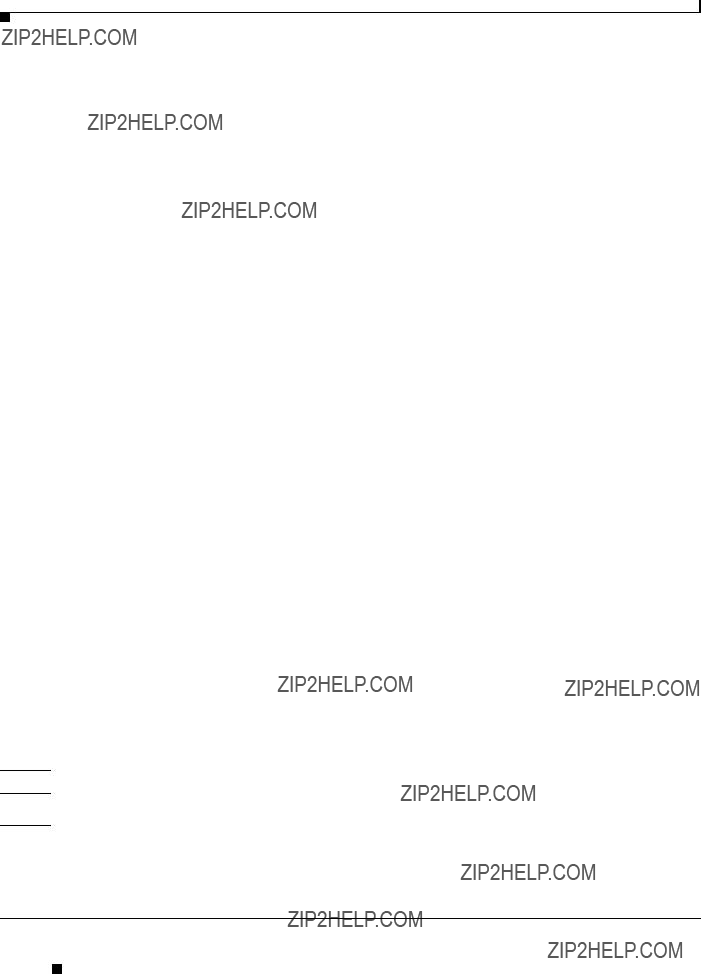
Chapter 4 Configuring the VSA
Configuration Tasks
Creating Dynamic Crypto Maps
Step 1
Step 2
A dynamic crypto map entry is a crypto map entry with some parameters not configured.The missing parameters are later dynamically configured (as the result of an IPSec negotiation). Dynamic crypto maps are only available for use by IKE.
Dynamic crypto map entries are grouped into sets. A set is a group of dynamic crypto map entries all with the same
To create a dynamic crypto map entry, use the following commands starting in global configuration mode:
C7200 VSA (VPN Services Adapter) Installation and Configuration Guide

Chapter 4 Configuring the VSA
Configuration Tasks
C7200 VSA (VPN Services Adapter) Installation and Configuration Guide

Chapter 4 Configuring the VSA
Configuration Tasks
To add a dynamic crypto map set into a crypto map set, use the following command in global configuration mode:
Applying Crypto Map Sets to Interfaces
Apply a crypto map set to each interface through which IPSec traffic will flow. Crypto maps instruct the router to evaluate the interface traffic against the crypto map set and use the specified policy during connection or security association negotiation on behalf of traffic to be protected by crypto.
To apply a crypto map set to an interface, use the following command in interface configuration mode:
To specify redundant interfaces and name an identifying interface, use the following command in global configuration mode:
Monitoring and Maintaining IPSec
To clear (and reinitialize) IPSec security associations, use one of the following commands in EXEC or enable mode (see ???Using the EXEC Command Interpreter??? section on page
C7200 VSA (VPN Services Adapter) Installation and Configuration Guide

Chapter 4 Configuring the VSA
Configuration Tasks
To view information about your IPSec configuration, use one or more of the following commands in EXEC mode:
Verifying IKE and IPSec Configurations
To view information about your IPSec configurations, use the show crypto ipsec
Note If a user enters an IPSec transform that the hardware (the IPSec peer) does not support, a warning message will be displayed in the show crypto ipsec
The following sample output from the show crypto ipsec
Router# show crypto ipsec
Transform set
WARNING:encryption hardware does not support transform
To view information about your IKE configurations, use show crypto isakmp policy EXEC command.
Note If a user enters an IKE encryption method that the hardware does not support, a warning message will be displayed in the show crypto isakmp policy output.
The following sample output from the show crypto isakmp policy command displays a warning message after a user tries to configure an IKE encryption method that the hardware does not support:
Router# show crypto isakmp policy
Protection suite of priority 1
encryption algorithm: AES - Advanced Encryption Standard (256 bit keys).
WARNING:encryption hardware does not support the configured encryption method for ISAKMP policy 1
C7200 VSA (VPN Services Adapter) Installation and Configuration Guide

Chapter 4 Configuring the VSA
Configuration Tasks
Verifying the Configuration
Some configuration changes take effect only after subsequent security associations are negotiated. For the new settings to take effect immediately, clear the existing security associations.
To clear (and reinitialize) IPSec security associations, use one of the commands in Table
Table
The following steps provide information on verifying your configurations:
Step 1 Enter the show crypto ipsec
Router# show crypto ipsec
Transform set
Transform set t1:
Transform set t100:
Transform set t2:
will negotiate = {Tunnel,},
Step 2 Enter the show crypto map [interface interface | tag
Router# show crypto map
Crypto Map:
Crypto Map
Peer = 172.21.114.67
Extended IP access list 141
source: addr = 172.21.114.123/0.0.0.0
dest: addr = 172.21.114.67/0.0.0.0 Current peer: 172.21.114.67
PFS (Y/N): N Transform sets={t1,}
Step 3 Enter the show crypto ipsec sa [map
view information about IPSec security associations:
Router# show crypto ipsec sa
interface: Ethernet0
Crypto map tag:
local ident (addr/mask/prot/port): (172.21.114.123/255.255.255.255/0/0)
C7200 VSA (VPN Services Adapter) Installation and Configuration Guide

Chapter 4 Configuring the VSA
Configuration Tasks
remote ident (addr/mask/prot/port): (172.21.114.67/255.255.255.255/0/0) current_peer: 172.21.114.67
PERMIT, flags={origin_is_acl,}
#pkts encaps: 10, #pkts encrypt: 10, #pkts digest 10
#pkts decaps: 10, #pkts decrypt: 10, #pkts verify 10 #send errors 10, #recv errors 0
local crypto endpt.: 172.21.114.123, remote crypto endpt.: 172.21.114.67 path mtu 1500, media mtu 1500
current outbound spi: 20890A6F inbound esp sas:
spi: 0x257A1039(628756537) transform:
slot: 0, conn id: 26, crypto map:
sa timing: remaining key lifetime (k/sec): (4607999/90)
IV size: 8 bytes
replay detection support: Y inbound ah sas:
outbound esp sas:
spi: 0x20890A6F(545852015) transform:
slot: 0, conn id: 27, crypto map:
sa timing: remaining key lifetime (k/sec): (4607999/90)
IV size: 8 bytes
replay detection support: Y outbound ah sas:
interface: Tunnel0
Crypto map tag:
local ident (addr/mask/prot/port): (172.21.114.123/255.255.255.255/0/0)
remote ident (addr/mask/prot/port): (172.21.114.67/255.255.255.255/0/0)
current_peer: 172.21.114.67 PERMIT, flags={origin_is_acl,}
#pkts encaps: 10, #pkts encrypt: 10, #pkts digest 10
#pkts decaps: 10, #pkts decrypt: 10, #pkts verify 10 #send errors 10, #recv errors 0
local crypto endpt.: 172.21.114.123, remote crypto endpt.: 172.21.114.67 path mtu 1500, media mtu 1500
current outbound spi: 20890A6F inbound esp sas:
spi: 0x257A1039(628756537) transform:
slot: 0, conn id: 26, crypto map:
sa timing: remaining key lifetime (k/sec): (4607999/90)
IV size: 8 bytes
replay detection support: Y inbound ah sas:
outbound esp sas:
spi: 0x20890A6F(545852015) transform:
slot: 0, conn id: 27, crypto map:
sa timing: remaining key lifetime (k/sec): (4607999/90)
IV size: 8 bytes
replay detection support: Y outbound ah sas:
For a detailed description of the information displayed by the show commands, refer to the ???IP Security and Encryption??? chapter of the Security Command Reference publication.
C7200 VSA (VPN Services Adapter) Installation and Configuration Guide

Chapter 4 Configuring the VSA
Configuration Examples
Configuration Examples
This section provides the following configuration examples:
???Configuring IKE Policies Example, page
???Configuring IPSec Configuration Example, page
???Basic IPSec Configuration Illustration, page
Configuring IKE Policies Example
In the following example, two IKE policies are created, with policy 15 as the highest priority, policy 20 as the next priority, and the existing default priority as the lowest priority. It also creates a preshared key to be used with policy 20 with the remote peer whose IP address is 192.168.224.33.
crypto isakmp policy 15 encryption 3des
hash md5 authentication
lifetime 5000
crypto isakmp policy 20 authentication
crypto isakmp key 1234567890 address 192.168.224.33
Configuring IPSec Configuration Example
The following example shows a minimal IPSec configuration where the security associations will be established via IKE:
An IPSec access list defines which traffic to protect:
A transform set defines how the traffic will be protected. In this example, transform set ???myset1??? uses DES encryption and SHA for data packet authentication:
crypto ipsec
Another transform set example is ???myset2,??? which uses Triple DES encryptions and MD5 (HMAC variant) for data packet authentication:
crypto ipsec
A crypto map joins together the IPSec access list and transform set and specifies where the protected traffic is sent (the remote IPSec peer):
crypto map toRemoteSite 10
set
C7200 VSA (VPN Services Adapter) Installation and Configuration Guide

Chapter 4 Configuring the VSA
Basic IPSec Configuration Illustration
The crypto map is applied to an interface:
interface Serial0
ip address 10.0.0.2
crypto map toRemoteSite
Note In this example, IKE must be enabled.
Basic IPSec Configuration Illustration
The following is an example of an IPSec configuration in which the security associations are established through IKE. In this example, an access list is used to restrict the packets that are encrypted and decrypted. In this example, all packets going from IP address 10.0.0.2 to IP address 10.2.2.2 are encrypted and decrypted and all packets going from IP address 10.2.2.2 to IP address 10.0.0.2 are encrypted and decrypted. Also, one IKE policy is created.
Figure
Only packets from 10.0.0.2 to 10.2.2.2 are encrypted and authenticated across the network.
10.0.0.1
All other packets are not encrypted
Clear text
Clear text
10.2.2.2
10.2.2.1
29728
Router A Configuration
Specify the parameters to be used during an IKE negotiation:
Update to 3DES/AES
crypto isakmp policy 15 encryption des
hash md5
authentication
lifetime 5000
crypto isakmp key 1234567890 address 10.2.2.3 crypto isakmp identity address
C7200 VSA (VPN Services Adapter) Installation and Configuration Guide

Chapter 4 Configuring the VSA
Basic IPSec Configuration Illustration
Note In the preceding example, the encryption DES of policy 15 would not appear in the written configuration because this is the default value for the encryption algorithm parameter.
A transform set defines how the traffic will be protected:
crypto ipsec
Note In the preceding example, the mode tunnel would not appear in the written configuration because this is the default value for the
A crypto map joins the transform set and specifies where the protected traffic is sent (the remote IPSec peer):
crypto map toRemoteSite 10
set peer 10.2.2.3
set
The crypto map is applied to an interface:
interface Serial0
ip address 10.0.0.3 crypto map toRemoteSite
An IPSec access list defines which traffic to protect:
Router B Configuration
Specify the parameters to be used during an IKE negotiation:
crypto isakmp policy 15 encryption des
hash md5
authentication
lifetime 5000
crypto isakmp key 1234567890 address 10.0.0.3 crypto isakmp identity address
A transform set defines how the traffic will be protected:
crypto ipsec
Note In the preceding example, the parameter ???mode tunnel??? would not appear in the written configuration because this is the default value for this configuration.
C7200 VSA (VPN Services Adapter) Installation and Configuration Guide

Chapter 4 Configuring the VSA
Troubleshooting Tips
A crypto map joins the transform set and specifies where the protected traffic is sent (the remote IPSec peer):
crypto map toRemoteSite 10
set peer 10.0.0.3
set
The crypto map is applied to an interface:
interface Serial0
ip address 10.2.2.3 crypto map toRemoteSite
An IPSec access list defines which traffic to protect:
Troubleshooting Tips
To verify that Cisco IOS software has recognized the VSA, enter the show diag command and check the output. In the following example, the IOS software recognizes the
Router# show diag 0
Slot 0:
To see if the VSA is currently processing crypto packets, enter the show crypto engine accelerator statistic 0 command. The following is sample output:
Router# show crypto engine accelerator statistic 0

Chapter 4 Configuring the VSA
Troubleshooting Tips
When the VSA processes packets, the ???packets in??? and ???packets out??? counter changes. Counter ???packets out??? represents the number of packets directed to the VSA. Counter ???packets in??? represents the number of packets received from the VSA.
C7200 VSA (VPN Services Adapter) Installation and Configuration Guide

Chapter 4 Configuring the VSA
Monitoring and Maintaining the VSA
To see if the IKE/IPSec packets are being redirected to the VSA for IKE negotiation and IPSec encryption and decryption, enter the show crypto eli command. The following is sample output when Cisco IOS software redirects packets to the VSA:
Router# show crypto eli
Hardware Encryption : ACTIVE
Number of hardware crypto engines = 1
When the software crypto engine is active, the show crypto eli command yields no output.
When the Cisco IOS software agrees to redirect crypto traffic to the VSA, it prints a message similar to the following:
...switching to hardware crypto engine
To disable the VSA, use the configuration mode no crypto engine accelerator <slot> command, as follows:
Router(config)# no crypto engine accelerator 0
...switching to SW crypto engine Router(config)#
*Feb 6 11:57:26.763:
*Feb 6 11:57:26.779:
*Feb 6 11:57:26.779:
Monitoring and Maintaining the VSA
This section includes the following topics:
???Using Deny Policies in Access Lists, page
???Monitor and Maintenance Commands, page
Using Deny Policies in Access Lists
Specifying a deny address range in an access list results in ???jump??? behavior. When a denied address range is hit, it forces the search to ???jump??? to the beginning of the access list associated with the next sequence on a crypto map and continue the search. If you want to pass clear traffic on these addresses, you must insert a deny address range for each sequence on a crypto map. In turn, each permit list of addresses inherits all the deny address ranges specified in the access list. A deny address range causes the software to do a subtraction of the deny address range from a permit list, and creates multiple permit address ranges that need to be programmed in hardware. This behavior can cause repeated address ranges to be programmed in the hardware for a single deny address range, resulting in multiple permit address ranges in a single access list.
C7200 VSA (VPN Services Adapter) Installation and Configuration Guide

Chapter 4 Configuring the VSA
Monitoring and Maintaining the VSA
The crypto ipsec ipv4
Configuration Guidelines and Restrictions
???The crypto ipsec ipv4
???If you apply the specified keyword (jump, clear, or drop) when crypto maps are already configured on the VSA module, all existing IPSec sessions are temporarily removed and restarted which impacts traffic on your network.
???The number of deny entries that can be specified in an access list are dependent on the keyword specified:
???
???
???
Monitor and Maintenance Commands
Use the commands that follow to monitor and maintain the VSA:
C7200 VSA (VPN Services Adapter) Installation and Configuration Guide

C7200 VSA (VPN Services Adapter) Installation and Configuration Guide
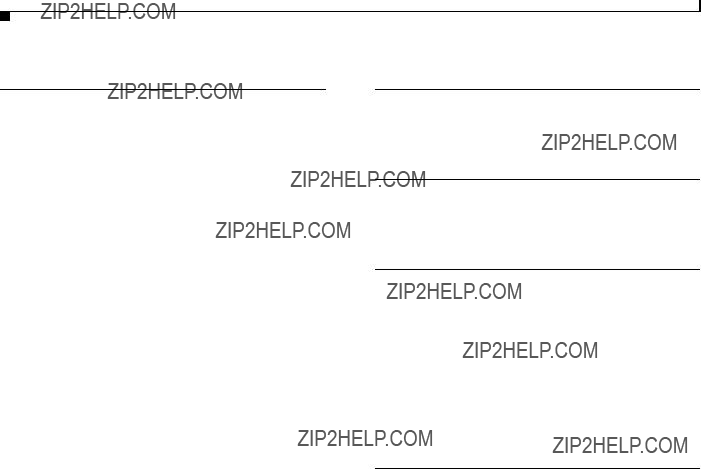

Index
requirements 2 - 2
software and hardware compatability ix, 2 - 2 standards
supported 1 - 5
T
This 2 - 1
tools and equipment, required 2 - 1
V
W
warnings, safety 2 - 3
warnings and cautions 3 - 2
C7200 VSA (VPN Services Adapter) Installation and Configuration Guide

Index
C7200 VSA (VPN Services Adapter) Installation and Configuration Guide